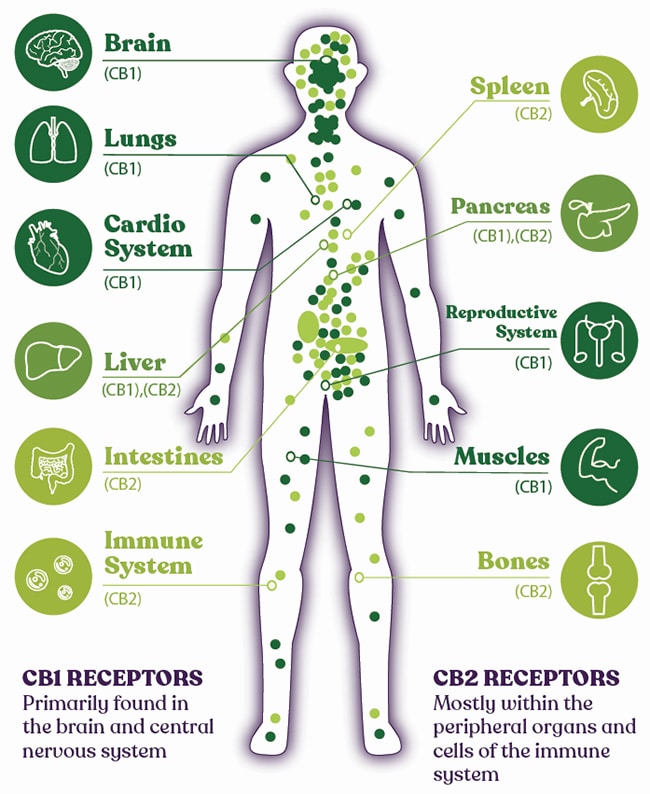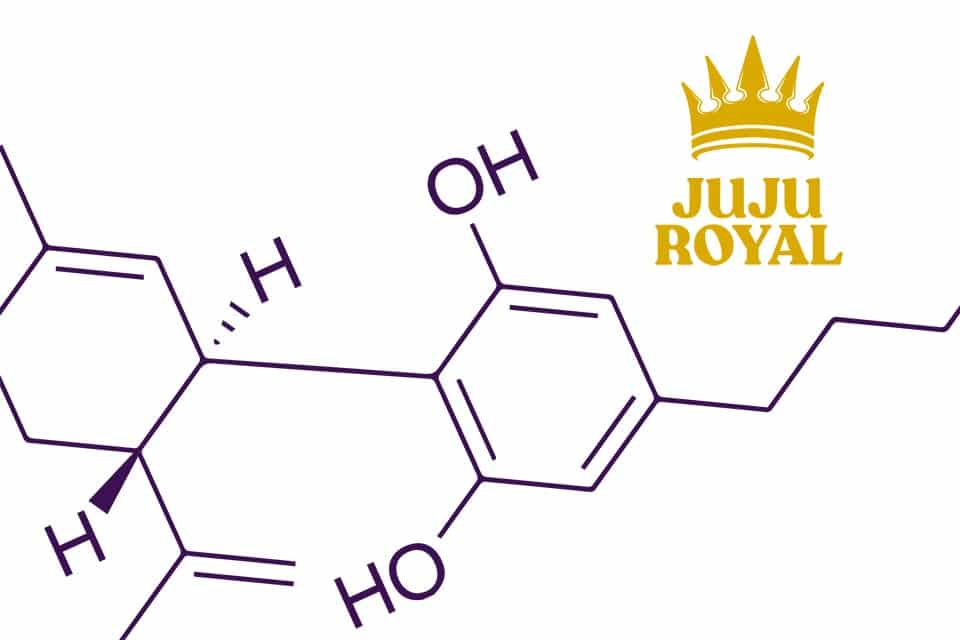What is a Cannabinoid?
Simply put, cannabinoids are naturally occurring compounds found in the cannabis plant. There are dozens of compounds including cannabidiol, THC, and a host of other cannabinoids. Together they are responsible for the benefits and drawbacks to medical marijuana and industrial hemp based products. Technically, cannabidiol and its sister cannabinoid compounds are classified as phytocannabinoids, which means that they’re derived from plants. But there are also several other types of cannabinoids.
For example, the cannabinoids produced within the body’s endocannabinoid system are known as endocannabinoids (such as arachidonoylethanolamine, virodhamine, and many others). There are also cannabinoids manufactured via chemical reactions in laboratories, known as synthetic cannabinoids.
The human body actually has areas that are made specifically for cannabinoids — they are called cannabinoid receptor sites. These sites make up the endocannabinoid system, which is responsible for numerous physiological and mental processes that occur naturally within the body. The endocannabinoid system includes a number of specialized cell receptors in the brain and in various other organs throughout the body. These receptors fall into two types: CB1 and CB2. CB1 receptors are found mainly in the brain (but also in the liver, kidneys, and lungs), while CB2 receptors are found mainly in the immune system. Cannabinoid substances bind with these receptors to coordinate various functions across the body.
What Effects Does Cannabidiol Have?
To understand cannabidiol’s function within the body, we need to examine how receptors like CB1 and CB2 interact with other chemical compounds. But first you’ll need to know these three terms…
- Agonists – chemicals that bind to a receptor and activate it to produce a biological response.
- Inverse agonists – chemicals that bind to the same receptor as agonists but produce the exact opposite result.
- Antagonists – the complete opposite of agonists as they inhibit or dampen the functions of a receptor.
The indirect interactions of cannabidiol with the endocannabinoid system has many effects, some of which surprised scientists and are still being researched. Some of cannabidiol’s functions include:
- Effectively increases CB1 density, amplifying the effects of all cannabinoids that bind to CB1 receptors.
- Acts as a 5-HT1a receptor agonist in the brain.
- Acts as inverse agonist of CB2 receptors, effectively reducing the effects of cannabinoids that make CB2 receptors less responsive.
- Acts as an antagonist for the putative GPR55 receptor, an element of the endocannabinoid system that is still being researched. It is suggested that GPR55 may be a third type of cannabinoid receptor altogether.
Between the above functions, most of cannabidiol’s observed effects are well explained. However, scientists are still unclear about how some effects of cannabidiol are actually occurring. The most possible explanation is via the hypothetical GPR55 receptor, or through more indirect and synergistic effects that still await discovery.

How Does Cannabidiol Work?
Cannabidiol is fairly unique as far as cannabinoids go, because it does not seem to interact directly with either the CB1 or CB2 receptors. So what does it do if it’s not interacting directly with our receptors? Cannabidiol has a particularly low potential for binding with the CB1 and CB2 receptors, but instead acts as an antagonist of the receptors’ agonists. In layman’s terms, this means that cannabidiol keeps the receptors working at optimal capacity and helps the function of all other cannabinoids, including the body’s own endocannabinoids.
What Kinds of Effects Can Cannabinoids Have on the Body?
There are several types of cannabinoids. Even within phytocannabinoids, there are wide ranges of compounds and effects that we are still learning about. Cannabinoids represent a diverse class of chemical compounds that can be very different from each other. Their only common feature is that they all act on the body’s cannabinoid receptors, either directly or indirectly.

